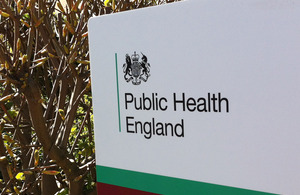Considering public health for Liverpool Kensington and Fairfield licence applications
Public health teams are inputting into the application process for alcohol licensing and cumulative impact policy (CIP) areas in Liverpool.

Background
Liverpool City Council area is an urban area with a population of 470,780 (2013 mid-year estimate). Liverpool experiences higher degrees of harm than the national and regional averages on most indicators of alcohol-related harm.
Case in brief
A ward councillor for Kensington and Fairfield raised concerns about alcohol related problems in his ward. This is a ward of substantial deprivation, the third most deprived in the city, with a particular problem with street drinking and its associated issues such as litter, public urination and intimidation of the public.
The licensing authority held a series of meetings with the ward councillor to get more information on the concerns of residents, including:
- if concerns relate to on or off-licenses, or both
- if concerns extend to other establishments
- which parts of the ward were causing the biggest concerns
- what times of the day and week were the problems of concern
The licensing authority submitted a report to the licensing committee requesting a consultation on a cumulative impact policy (CIP) which was agreed. The proposed CIP was intended to cover off-licences and late-night refreshment premises (not on-licence).
The approach used
The public health team submitted evidence as part of the consultation with responsible authorities, licensees, community groups and schools in the proposed area. The representation was centred on the wider determinants of health, in particular:
- poverty
- school achievement
- crime
- employment
The data
Data was gathered for:
- location of GP practices within proposed zone
- location of off-licence premises
- hospital admissions due to alcohol specific conditions by GP practice with practices in the zone highlighted and compared to all practices in the city, including an indication of the costs of these admissions
- children living in poverty
- percentage of students achieving 5 or more A* to C grade GCSEs or equivalent
- pupil absence
- crime rates
- rates of worklessness and Employment Support Allowance or Incapacity Benefit claimants
- car ownership
In most cases, data was presented with Liverpool ward comparison.
Outcome
Since the CIP introduction in January 2014, 3 off-licence premises in the cumulative impact zone have closed. Two of these were down to revocation of licence whilst a further off-licence went out of business. One of the premises that had its licence revoked tried unsuccessfully to gain another licence to retail in the CIP area.
At the same time 3 new licences have been granted - all for restaurants which were not included within the parameters of the CIP. Anti-social behaviour and alcohol related violent crime in the zone continue to make up a lower proportion of the total ward issues than before the introduction of the CIP.
Since the introduction of the CIP the ward has dropped down the Liverpool wards anti-social behaviour league table with no obvious evidence of displacement to neighbouring wards.